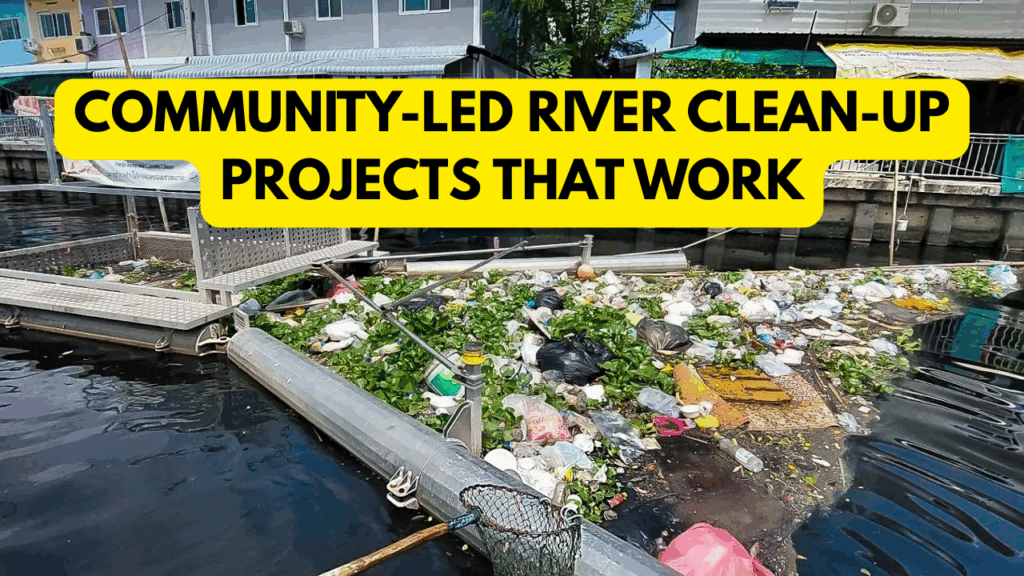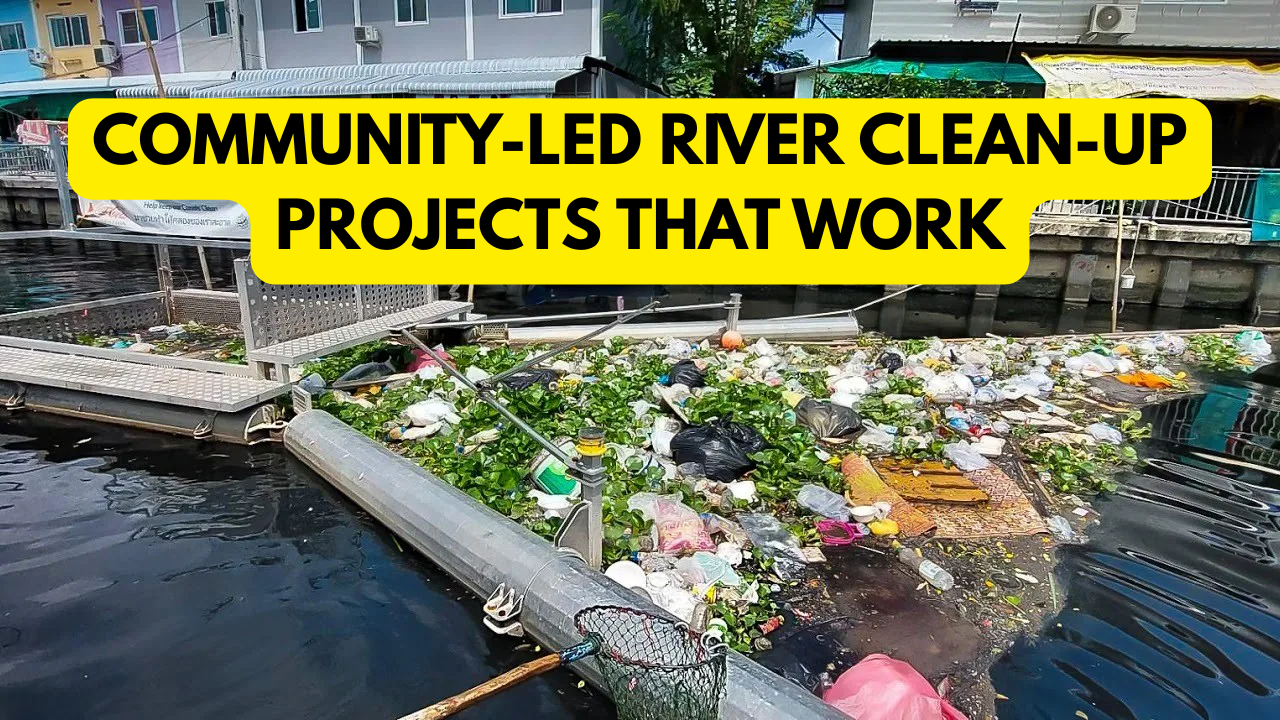
Rivers are the lifelines of our ecosystems and communities, but many of them face pollution from plastic waste, industrial discharge, and urban runoff. While governments and organizations play their part, community-led river clean-up projects have emerged as one of the most effective and inspiring solutions to restore these water bodies. By combining local knowledge, volunteer power, and sustainable practices, these initiatives prove that everyday people can make a big difference.
Why Community-Led Projects Matter
Community-driven clean-ups go beyond just removing waste—they:
- Reconnect people with their local rivers.
- Spread awareness about pollution and conservation.
- Create long-term stewardship of water resources.
- Inspire other regions to replicate the model.
- Promote both ecological and social benefits.
When communities lead the charge, river conservation becomes not just a task, but a shared responsibility.
Successful Community-Led River Clean-Up Projects
1. River Thames Clean-Up, UK
Local organizations and volunteers have worked for decades to restore the Thames, once declared “biologically dead.” Today, it’s cleaner than ever, with thriving wildlife and ongoing clean-up programs powered by citizen groups.
2. Mithi River Revival, India
Mumbai’s Mithi River faced years of pollution from sewage and industrial waste. Community volunteers, students, and NGOs organized regular clean-ups and awareness campaigns, helping reduce waste dumping and bringing the river back into focus.
3. Los Angeles River Clean-Up, USA
Run by Friends of the Los Angeles River (FoLAR), this initiative involves thousands of volunteers every year. They remove tons of trash, restore habitats, and advocate for the river’s role in the city’s ecological balance.
4. Citarum River Clean-Up, Indonesia
Known as one of the most polluted rivers in the world, the Citarum has seen grassroots involvement alongside government programs. Local communities organize waste collection, recycling drives, and education campaigns, making a visible impact.
5. Pasig River Clean-Up, Philippines
Community-led organizations partnered with local authorities to restore the Pasig River. Through waste segregation, riverbank clean-ups, and education programs, residents are directly involved in ensuring its gradual recovery.
Key Ingredients of Success
From these examples, we see common factors that make river clean-up projects work:
- Volunteer Engagement – Mobilizing people of all ages creates ownership.
- Partnerships – Collaboration with NGOs, schools, and authorities ensures long-term impact.
- Education – Awareness campaigns prevent future pollution.
- Recycling & Waste Management – Proper disposal ensures waste doesn’t re-enter rivers.
- Consistency – Regular clean-ups and monitoring are essential for progress.
Table: Inspiring Community-Led River Clean-Up Projects
| River | Country | Community Role | Impact |
|---|---|---|---|
| Thames | UK | Citizen groups & NGOs | Revived wildlife, reduced pollution |
| Mithi | India | Local volunteers & NGOs | Waste reduction, awareness campaigns |
| Los Angeles River | USA | Friends of LA River (FoLAR) | Habitat restoration, trash removal |
| Citarum | Indonesia | Community + schools + NGOs | Waste collection, recycling drives |
| Pasig | Philippines | Residents, NGOs, authorities | Segregation programs, gradual revival |
How You Can Start a Local Clean-Up Project
- Gather Volunteers – Mobilize friends, family, or local groups.
- Choose a Site – Identify a polluted riverbank or section needing attention.
- Coordinate with Authorities – Seek permission and logistical support.
- Organize Waste Management – Partner with recyclers for collected trash.
- Raise Awareness – Use social media or workshops to prevent future dumping.
- Repeat and Scale – Consistency is key to long-term impact.
Overview Table
| Step | What It Involves | Outcome |
|---|---|---|
| Volunteer Mobilization | Recruit locals and groups | Builds ownership and energy |
| Site Selection | Identify polluted river areas | Focused and impactful clean-ups |
| Authority Collaboration | Get permissions and safety support | Smooth operations, more resources |
| Waste Management Plan | Sorting, recycling, disposal | Sustainable and eco-friendly outcomes |
| Education Campaigns | Workshops, social media, outreach | Reduces future pollution |
| Regular Monitoring | Track progress and repeat efforts | Long-term conservation success |
Final Thoughts
Community-led river clean-up projects prove that environmental change doesn’t always require massive budgets or government programs—it starts with people taking action. From the Thames to the Pasig, communities around the globe are reclaiming their rivers, building resilience, and ensuring clean water for future generations.
The real beauty lies in the ripple effect: when one community acts, others are inspired to follow.
FAQs
Q1: What makes community-led river clean-ups effective?
They succeed because of local involvement, ownership, and consistent efforts.
Q2: Can small volunteer groups really make a difference?
Yes, even small groups create visible change and inspire larger community movements.
Q3: How can I join a river clean-up project?
Check with local NGOs, municipal authorities, or start one with your own community.

